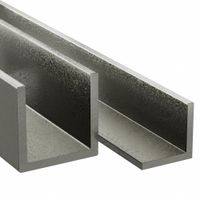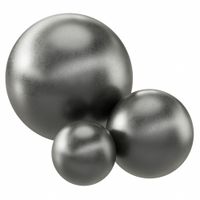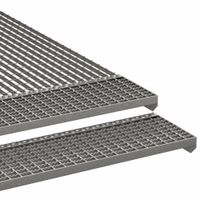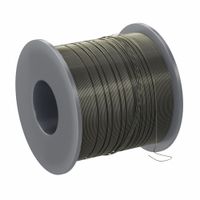Call +(254) 703 030 000 / 751 483 999 / 721 704 777
- Home
- Raw Materials
- Metals
- Carbon Steel
.....Read More
Frequently Asked Questions
What is carbon steel used for?
Carbon steel is a versatile material used in various industries due to its strength, durability, and affordability. It is primarily composed of iron and carbon, with the carbon content typically ranging from 0.05% to 2.0%. This composition allows carbon steel to be classified into different categories: low, medium, and high carbon steel, each with distinct properties and applications.
1. **Construction**: Carbon steel is widely used in the construction industry for structural frameworks, bridges, and buildings due to its high tensile strength and ability to withstand stress. It is also used in reinforcing bars (rebar) to provide additional support to concrete structures.
2. **Automotive Industry**: In the automotive sector, carbon steel is used to manufacture vehicle bodies, chassis, and various engine components. Its strength and malleability make it ideal for parts that require durability and resistance to wear and tear.
3. **Manufacturing and Machinery**: Carbon steel is essential in the production of machinery and industrial equipment. It is used to make gears, shafts, axles, and other machine components that require high strength and resistance to deformation.
4. **Tools and Cutting Instruments**: High carbon steel is used to produce cutting tools, drill bits, knives, and other hand tools due to its hardness and ability to maintain a sharp edge.
5. **Pipes and Tubes**: Carbon steel pipes and tubes are used in the transportation of water, oil, and gas. They are favored for their strength, resistance to pressure, and ability to withstand harsh environmental conditions.
6. **Household Appliances**: Carbon steel is used in the production of various household items, including cookware, kitchen utensils, and appliances, due to its durability and heat resistance.
Overall, carbon steel's adaptability and cost-effectiveness make it a preferred material across multiple sectors.
How is carbon steel different from stainless steel?
Carbon steel and stainless steel differ primarily in their composition, properties, and applications.
Carbon steel is composed mainly of iron and carbon, with the carbon content typically ranging from 0.12% to 2.0%. It may also contain small amounts of other elements like manganese, silicon, and copper. The higher carbon content makes carbon steel stronger and harder but less ductile and more prone to rusting. It is often used in applications where strength is more important than corrosion resistance, such as in construction, automotive components, and tools.
Stainless steel, on the other hand, contains a minimum of 10.5% chromium, which forms a passive layer of chromium oxide on the surface, preventing rust and corrosion. It may also include other alloying elements like nickel, molybdenum, and titanium to enhance its properties. Stainless steel is known for its excellent corrosion resistance, making it ideal for use in environments exposed to moisture and chemicals, such as in kitchenware, medical instruments, and architectural structures.
In terms of appearance, carbon steel typically has a matte finish and can rust if not coated or painted, while stainless steel has a shiny, reflective surface and is resistant to tarnishing.
The choice between carbon steel and stainless steel depends on the specific requirements of the application, such as the need for corrosion resistance, strength, and cost considerations. Carbon steel is generally less expensive than stainless steel, but the latter offers superior durability and longevity in corrosive environments.
What are the properties of carbon steel?
Carbon steel is an alloy primarily composed of iron and carbon, with the carbon content typically ranging from 0.05% to 2.0%. Its properties vary based on the carbon content and other alloying elements. Here are the key properties:
1. **Strength**: Carbon steel is known for its high tensile strength, which increases with higher carbon content. This makes it suitable for structural applications.
2. **Hardness**: The hardness of carbon steel also increases with carbon content, enhancing its wear resistance. However, this can make it more brittle.
3. **Ductility**: Lower carbon steels are more ductile, allowing them to be easily formed and welded. As carbon content increases, ductility decreases.
4. **Malleability**: Carbon steel can be shaped into various forms, especially when it has lower carbon content, making it ideal for manufacturing processes.
5. **Machinability**: Low carbon steels are easier to machine compared to high carbon steels, which can be more challenging due to increased hardness.
6. **Weldability**: Carbon steel with lower carbon content is more weldable. High carbon steels require preheating and post-weld heat treatment to prevent cracking.
7. **Corrosion Resistance**: Carbon steel is susceptible to rust and corrosion, especially in moist environments, unless coated or alloyed with other elements like chromium.
8. **Thermal Conductivity**: It has good thermal conductivity, making it useful in applications requiring heat transfer.
9. **Cost-Effectiveness**: Carbon steel is relatively inexpensive compared to other steel types, making it a cost-effective choice for many applications.
10. **Magnetic Properties**: Carbon steel is generally magnetic, which can be advantageous or disadvantageous depending on the application.
These properties make carbon steel versatile and widely used in construction, automotive, and manufacturing industries.
How do you prevent carbon steel from rusting?
To prevent carbon steel from rusting, several methods can be employed:
1. **Coatings and Paints**: Applying protective coatings such as paint, powder coatings, or specialized rust-inhibiting primers can create a barrier between the steel and environmental elements like moisture and oxygen.
2. **Galvanization**: This involves coating the steel with a layer of zinc, which acts as a sacrificial anode. The zinc corrodes instead of the steel, providing long-term protection.
3. **Corrosion Inhibitors**: These are chemicals that can be applied to the steel surface or added to the environment to reduce the rate of corrosion. They work by forming a protective film on the steel surface.
4. **Cathodic Protection**: This technique involves connecting the steel to a more easily corroded "sacrificial metal" to act as the anode. The sacrificial metal corrodes instead of the steel.
5. **Stainless Steel Cladding**: Covering carbon steel with a layer of stainless steel can prevent rusting, as stainless steel is more resistant to corrosion.
6. **Environmental Control**: Reducing exposure to moisture and corrosive elements by controlling the environment, such as using dehumidifiers or storing steel in dry, controlled conditions, can significantly reduce rusting.
7. **Regular Maintenance**: Regular inspection and maintenance, including cleaning and reapplication of protective coatings, can help identify and mitigate rust before it becomes severe.
8. **Alloying**: Adding elements like chromium, nickel, or molybdenum to the steel can enhance its corrosion resistance.
9. **Use of Sealants**: Applying sealants to joints and crevices can prevent moisture ingress, reducing the risk of rust.
10. **Proper Design**: Designing structures to avoid water traps and ensure proper drainage can minimize rust formation.
Implementing a combination of these methods can effectively prevent rusting of carbon steel.
Can carbon steel be welded?
Yes, carbon steel can be welded. Carbon steel is one of the most commonly welded materials due to its versatility, availability, and cost-effectiveness. The welding process for carbon steel involves several methods, including shielded metal arc welding (SMAW), gas metal arc welding (GMAW or MIG), gas tungsten arc welding (GTAW or TIG), and flux-cored arc welding (FCAW).
The weldability of carbon steel largely depends on its carbon content. Low carbon steels (with less than 0.3% carbon) are generally easier to weld and do not require preheating or post-weld heat treatment. Medium carbon steels (0.3% to 0.6% carbon) may require preheating and post-weld heat treatment to prevent cracking and ensure proper weld quality. High carbon steels (more than 0.6% carbon) are more challenging to weld due to their higher hardness and brittleness, often necessitating careful control of heat input and post-weld heat treatment to avoid cracking.
Key factors to consider when welding carbon steel include selecting the appropriate filler material, controlling heat input to prevent distortion and cracking, and ensuring proper joint preparation and cleanliness. Preheating may be necessary to reduce the cooling rate and minimize the risk of hydrogen-induced cracking, especially in thicker sections or higher carbon content steels.
Overall, with the right techniques and precautions, carbon steel can be effectively welded to produce strong and durable joints.
What are the different types of carbon steel?
Carbon steel is categorized based on the carbon content and other alloying elements. The main types are:
1. **Low Carbon Steel (Mild Steel):** Contains approximately 0.05% to 0.25% carbon. It is highly ductile, malleable, and easy to weld, making it suitable for applications like structural beams, automotive panels, and pipelines.
2. **Medium Carbon Steel:** Contains about 0.25% to 0.60% carbon. It offers a balance between strength and ductility, making it ideal for manufacturing automotive components, machinery parts, and railway tracks.
3. **High Carbon Steel:** Contains approximately 0.60% to 1.0% carbon. It is very strong and hard but less ductile, making it suitable for high-strength wires, springs, and cutting tools.
4. **Ultra-High Carbon Steel:** Contains 1.0% to 2.0% carbon. It is extremely hard and brittle, used in specialized applications like knives, axles, and punches.
Each type of carbon steel can be further modified with additional elements like manganese, silicon, or copper to enhance specific properties such as strength, corrosion resistance, or machinability.
How is carbon steel made?
Carbon steel is made through a series of processes that involve the extraction, refining, and alloying of iron with carbon. The process begins with the extraction of iron ore from the earth, which is then smelted in a blast furnace. In the blast furnace, iron ore is combined with coke (a form of carbon) and limestone. The coke serves as both a fuel and a reducing agent, while the limestone helps remove impurities.
The smelting process produces molten iron, also known as pig iron, which contains a high carbon content and various impurities. To convert pig iron into carbon steel, it undergoes further refining in a basic oxygen furnace (BOF) or an electric arc furnace (EAF). In the BOF, pure oxygen is blown through the molten iron, which reduces the carbon content and removes impurities by oxidizing them. In the EAF, recycled steel scrap is melted using electric arcs, and carbon content is adjusted by adding carbon materials.
Once the desired carbon content is achieved, the molten steel is tapped from the furnace and may undergo secondary refining processes, such as ladle metallurgy, to further adjust its composition and remove any remaining impurities. Alloying elements may be added to enhance specific properties.
The refined molten steel is then cast into various shapes, such as slabs, billets, or blooms, through continuous casting or ingot casting. These cast forms are subsequently hot-rolled or cold-rolled into final products like sheets, bars, or structural shapes.
Throughout the process, careful control of temperature, composition, and cooling rates is essential to achieve the desired mechanical properties and quality of the carbon steel.






